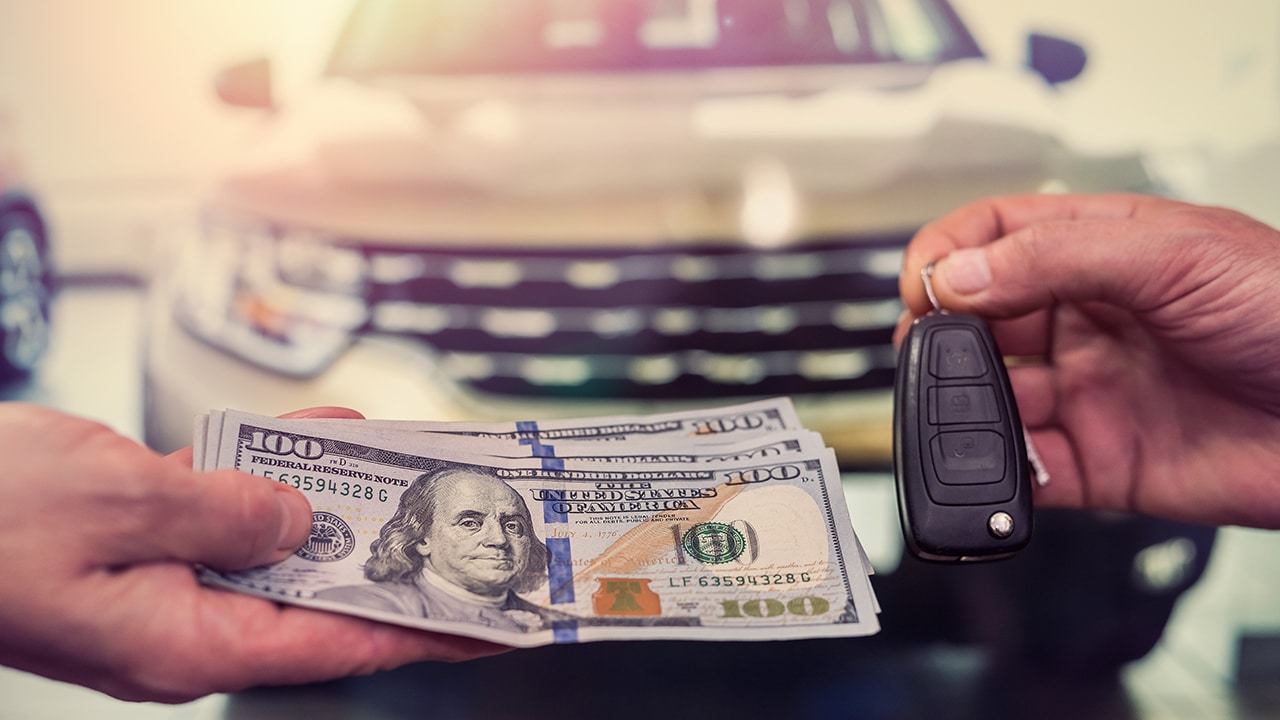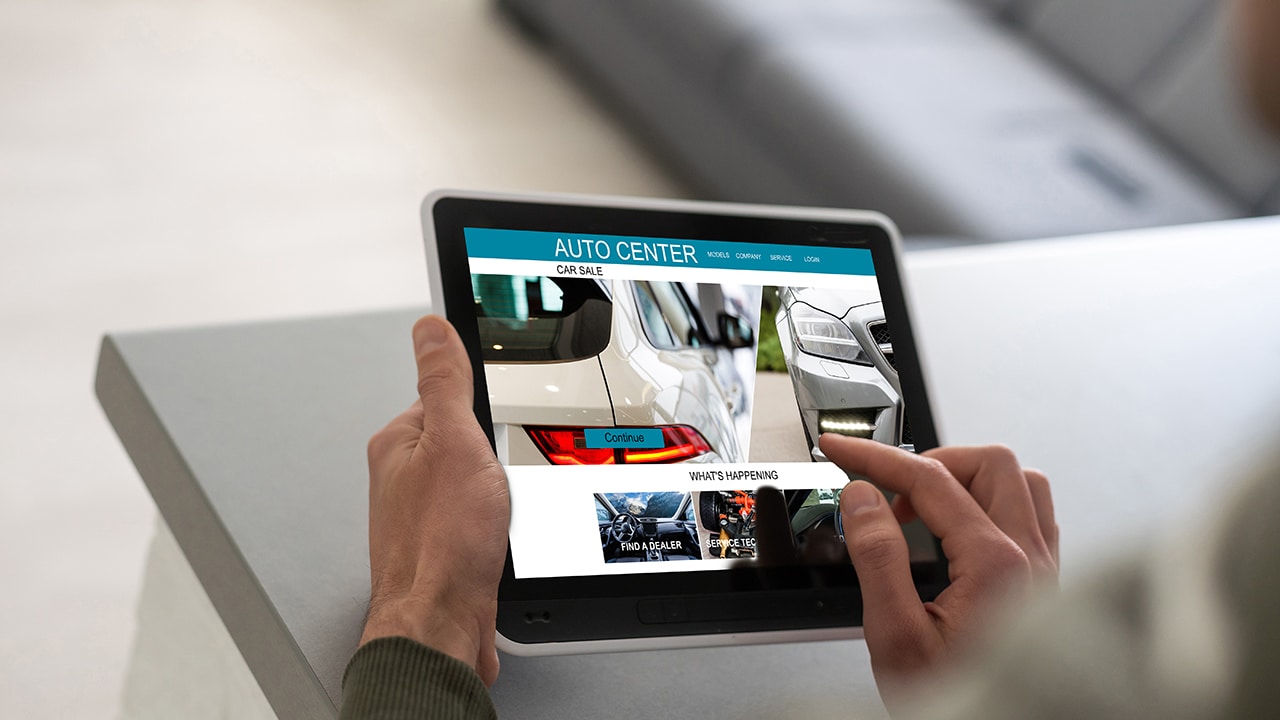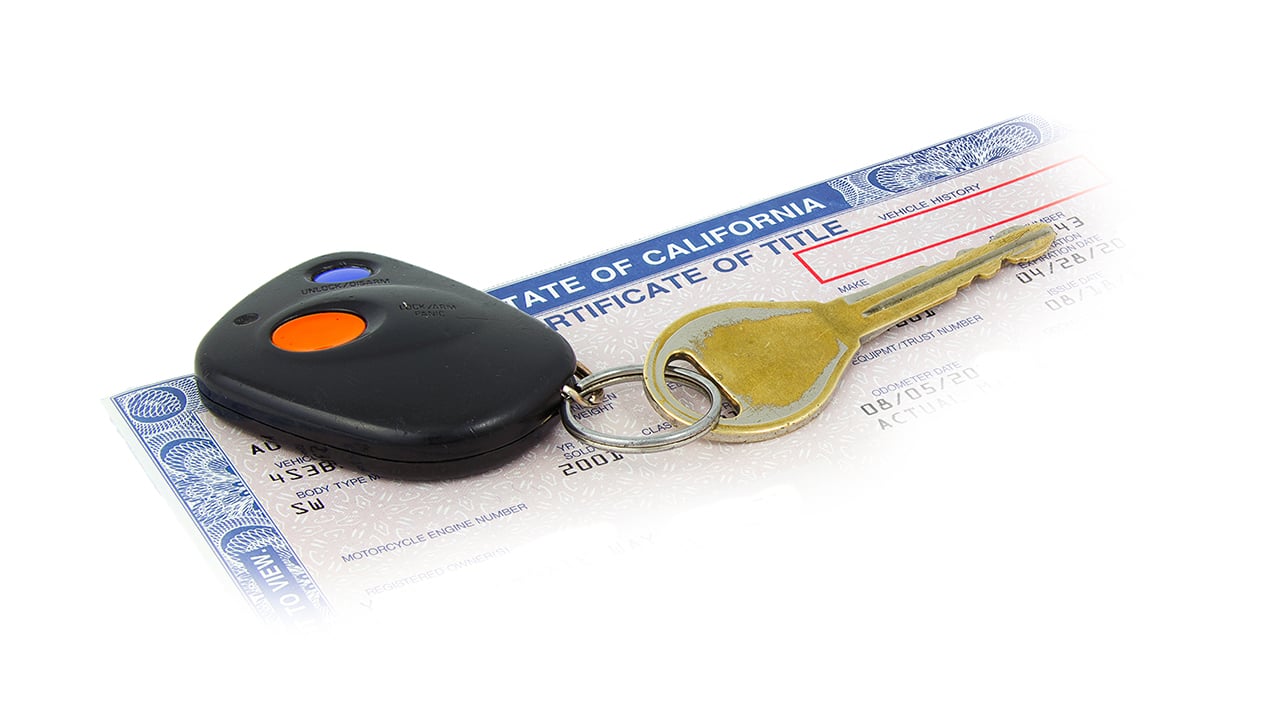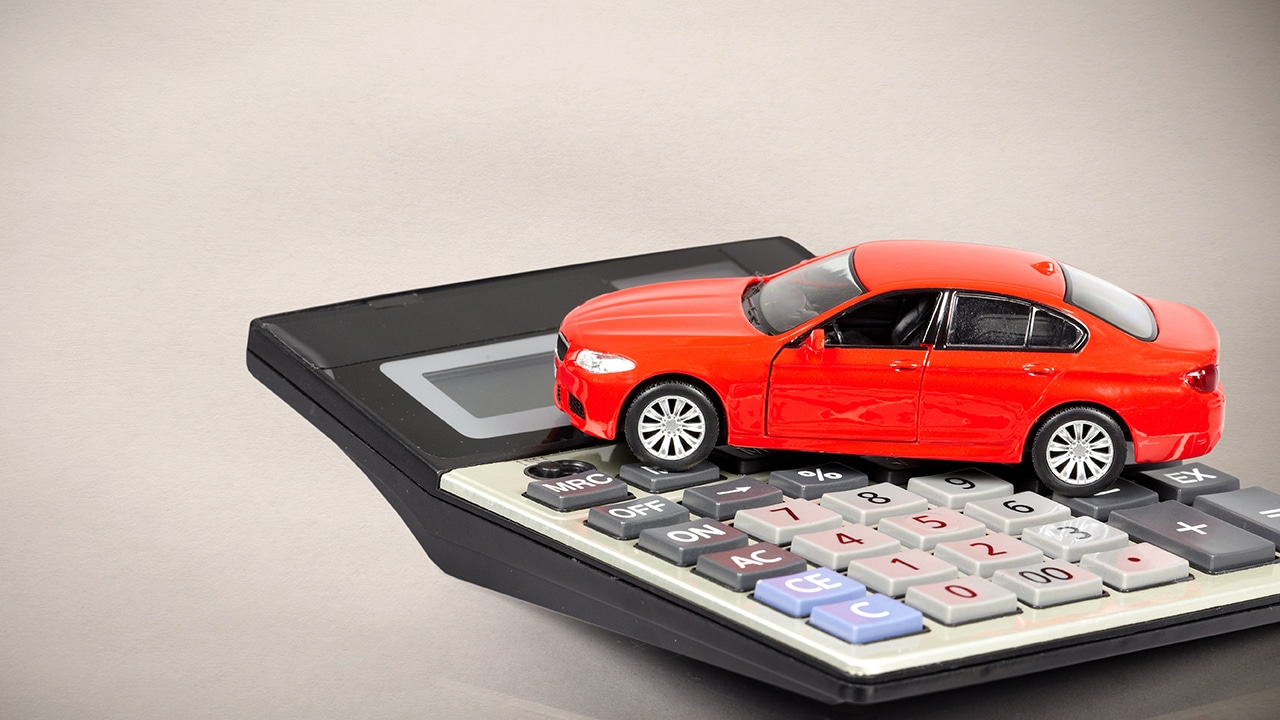Learn about what a bill of sale for a car is, how to get or write one and the requirements by state in this comprehensive guide.
Car Loans
Our finance experts created this auto loan guide to help you understand the lending process — whether you want to buy, lease or refinance a car
Taking out a loan to buy or refinance a car is a big decision with lots to consider. With this guide to auto loans, we at the MarketWatch Guides team hope to make that decision easier.
In this guide, you’ll find explanations of important industry terms. You’ll also learn how auto loan rates and the application process work.
Auto Loans Glossary
Understanding the terms surrounding auto loans is critical in helping you navigate the financing process. Here’s a brief auto loan glossary to get you started with learning the terminology:
| Term | Definition |
|---|---|
| Annual percentage rate (APR) | This percentage combines the interest rate with all up-front charges, such as loan origination fees. The APR is higher than the interest rate. |
| Co-borrower | A co-borrower shares responsibility for a debt. Unlike a co-signer, a co-borrower has a legal claim to the item the loan is for. |
| Co-signer | A co-signer agrees to be responsible for the debt if the primary borrower defaults on the loan. While a co-signer has no legal claim to the item the loan is for, a loan default will still hurt their credit. |
| Credit check | A credit check is a lookup of a potential borrower’s credit history. There are two types of credit checks: soft and hard. See definitions for both below. |
| Credit-scoring models | Most lenders use FICO® credit scores, but some use VantageScore instead. See definitions for both below. |
| Debt payments | Debt payments include mortgages, student loans and credit cards. Rent and expenses like food and utilities aren’t included. |
| Debt-to-income ratio (DTI ratio) | Your DTI ratio is your total monthly debt payments divided by your gross (pretax) monthly income. The lower this ratio is, the more likely you are to be approved for a loan and to get a lower rate. If this ratio is 43% or higher, you’re more likely to be denied for a loan. |
| FICO credit scores | These credit scores range from 300 to 850. They’re rated as poor (300–579), fair (580–669), good (670–739), very good (740–799), and exceptional (800–850). |
| Hard credit check | A lender performs a full credit check (also known as a hard pull or hard inquiry) that shows up on your credit report and temporarily lowers your credit score. Lenders typically require this when you want to get preapproved or actually apply for a loan. |
| Interest rate | The interest rate is the percentage the lender charges the borrower. This isn’t the same as the APR, which is usually the figure displayed in lender advertising. |
| Loan term | The loan term is the length of time the borrower has to pay a loan off. Auto loan terms generally range from 12 to 84 months. Longer loan terms typically come with higher interest rates. |
| Loan-to-value ratio (LTV ratio) | The LTV ratio is the loan amount compared to the value of the vehicle. Making a larger down payment, either with money or a trade-in, lowers your LTV ratio. A lower LTV ratio could mean a better chance of being approved and getting lower interest rates. |
| Preapproval | Preapproval uses a hard credit check to give you an idea of how much you might qualify to borrow. It requires documentation such as bank statements and tax returns to verify the financial information you provide, such as your income and the amount of your mortgage or rent payment. |
| Prequalification | Prequalification uses a soft credit check and the limited information you provide to give you an idea of how much you might qualify to borrow. |
| Refinancing | When you refinance, you take on a new loan to pay off an old one. If you get a shorter loan term or a lower interest rate, you can use a refinance loan to save money on interest. You could also reduce your monthly payment by taking on a longer loan term, but this would increase the amount of interest you’d pay. |
| Secured loan | A secured loan is backed by real property, known as collateral. Most car loans are secured loans. |
| Soft credit check | A lender doesn’t perform a full credit check, so your credit score isn’t affected. This type of credit check — also known as a “soft pull” or “soft inquiry” — is typically done for prequalification. |
| Unsecured loan | An unsecured loan isn’t backed by any collateral. A personal loan is an example of an unsecured loan. |
| VantageScore credit scores | These credit scores range from 300 to 850. They’re rated as very poor (300–499), poor (500–600), fair (601–660), good (661–780), and excellent (781–850). |
Overview: How Do Auto Loans Work?
Loans to buy or refinance a new or used car are some of the most common loans available at financial institutions. Auto loans generally come with much lower interest rates than other types of credit, such as credit cards and personal loans, since they’re usually secured loans backed by the car they’re financing.
In fact, APRs can go as low as 0%, but only for buyers with excellent credit. For borrowers with average or poor credit, interest rates can climb into the double digits.
Loan terms for auto financing typically range from 12 to 84 months, but most experts advise against 84-month auto loans and long terms. While these terms may be attractive to borrowers as they come with lower monthly payments, they also tend to come with higher interest rates and create a financial commitment that can extend beyond a car’s best years.
Types of Auto Loans
In the auto finance industry, borrowers have different situations and needs. As a result, lenders offer alternative financing options to accommodate them. Many of these loan options are similar products with other names, but understanding their differences can help you get a clearer picture of what to shop for.
Purchase Loans
A purchase loan is a loan for buying a vehicle. Within this category, there are three types of loans:
- New car purchase loan: This loan is used to buy a new vehicle from a licensed dealer. New car loans usually come with lower rates than used car loans.
- Used car purchase loan: This loan is for purchasing a used vehicle from a licensed dealer. Many lenders charge higher interest rates for vehicles that are older or have more miles on the odometer.
- Private party loan: This type of loan is used to purchase a vehicle from a private seller rather than a dealer. Many lenders don’t offer private party financing. The ones that do typically charge higher rates because these loans are considered somewhat riskier than traditional purchase loans.
Lease Loans
A lease is essentially a rental agreement for a car, except that when the agreement is over, you may have the option to buy the car. There are two types of lease loans:
- Lease agreement: A driver gets a car for a certain amount of time, usually 24 to 36 months, with set monthly payments. The driver must return the vehicle at the end of the agreement, but they’ll often have the option to purchase the vehicle at that time.
- Lease buyout: A driver can secure a lease-buyout loan to purchase their leased vehicle at the end of the term if they opt to buy.
Refinancing Loans
When you refinance an auto loan, you take out a new loan to pay off your existing one. There are two main types of auto refinance loans:
- Standard refinance: This is a loan that pays off your current one, often with a different term, different interest rate or both. If you can get a lower refinance auto loan rate or take on higher monthly payments with a shorter term, you can reduce the amount you pay in interest. You can also get lower monthly car payments by extending your term, but doing so will increase how much you pay in total interest.
- Cash-out refinance: With this type of loan, you remove equity from your vehicle in the form of cash when you refinance. This raises your LTV ratio and usually extends your loan term.
Where To Find Auto Loans
Auto loans are popular financial products, so you can find them practically anywhere. Lending options have different features and advantages that may appeal to different borrowers.
Banks
Brick-and-mortar banks are still popular choices for auto financing. Traditional banks generally offer competitive rates, but they may have stricter lending requirements than other options. Many banks offer discounts to people who have other accounts with the company, such as checking accounts, savings accounts or credit cards.
Credit Unions
Credit Unions are similar to banks but are member-owned organizations rather than for-profit commercial financial institutions. These organizations often have more lenient lending requirements than banks and may have lower interest rates. Most credit unions require membership, but many allow you to join for a small donation to the credit union or a charity.
Dealerships
Car dealerships often have in-house financing options that may offer lower interest rates than some banks and credit unions. Larger, branded dealerships may even offer 0% APR car deals on new vehicles to buyers with excellent credit.
Independent dealerships, sometimes called buy-here, pay-here (BHPH) dealerships, may also have their own financing options. While these vehicle loans may be accessible to borrowers with bad credit, many of them come with sky-high interest rates. It’s also common for BHPH dealers to install tracking devices on vehicles they finance and charge for this service.
Online Lenders
In an age where people buy practically everything online, auto loans are also widely available over the internet. Some of these online companies are direct lenders backed by banks, while others are lending brokers that seek out financing options for you. And some are loan marketplaces that allow you to post your needs and information online and wait for lenders to send offers to you.
Online lending has made it easy to compare loan offers. Applying online can be a fast, easy process. You may even get offers or approval within minutes, if not instantly.
Guide to Auto Loan Rates
One of the most important considerations when you’re choosing an auto loan is the rate you’ll pay. Some of the terminology used around lending can be confusing, and lenders are often coy about available rates until you hand your information over. Understanding what these terms mean, how auto loan rates are calculated and how your financial situation affects the rates you’re offered can help you know what to expect.
Interest Rate vs. APR
You may have seen the terms “interest rate” and “APR” used in similar ways, but there’s a key difference between the two. Interest rate refers to the percentage a lender charges you to borrow money. APR, on the other hand, includes fees and discounts in addition to that interest rate. Typically, APR is the percentage rate you see advertised.

Typical Auto Loan Fees
Loans may come with additional costs that are included in the APR. Not all lenders charge these fees or the same amounts, but these are the most common ones you’ll find:
- Application fee: This is a flat fee charged for submitting a loan application. Not all lenders charge an application fee.
- Origination fee: Some lenders charge this fee for processing a loan. The fee is either a flat rate or a percentage of the loan amount, depending on the lender.
Potential Auto Loan Discounts
Discounts aren’t as common in the auto loan industry as they are in industries like insurance or warranty. But there are still a few discounts that are common among lenders:
- Account holder discount: Some banks and credit unions offer car loan discounts to borrowers who have other accounts with them.
- Autopay discount: Depending on the lender, setting up automatic payments for your loan could get you a rate discount.
- Car-buying-service discount: Some lenders have car-buying services that find vehicles that meet their lending criteria. Those that do sometimes provide discounts for using this service.
Factors That Affect Auto Loan Rates
Auto loan rates vary by borrower and lender. That’s because they’re determined by each borrower’s situation. When you apply for an auto loan, your rates are based on a few factors about you and the vehicle you want to finance.
These are the factors that impact auto loan rates the most:
- Federal funds rate: Commonly referred to as “the interest rate,” the federal funds rate is the rate at which financial institutions borrow money. Since this directly affects their cost of doing business, you’ll likely be offered higher interest rates if the federal funds rate goes up.
- Market rates: Lending is a competitive industry, and lenders consider competitors’ rates when setting their own.
- Credit history: Your credit score plays a substantial role in your auto loan rate. Borrowers with excellent credit have access to the lowest APRs, while borrowers with poor credit scores face significantly higher rates.
- Loan term: In general, auto loan terms are between 12 and 84 months. While longer terms come with lower monthly payments, they also tend to come with higher interest rates.
- Debt-to-income ratio (DTI ratio): You may see higher interest rates as your DTI ratio goes up. Generally, you’ll have a harder time getting approved for an auto loan if your DTI ratio is 43% or higher.
- Vehicle details: The make, model, model year, mileage and condition of the vehicle you want to finance also factor into the rates you receive. In general, lenders charge higher rates for older vehicles and those with more miles.
How Your Credit Score Affects Car Loan Rates
Your credit score is perhaps the single most important personal factor in your auto loan rates. Lenders use credit scores to assess a borrower’s creditworthiness, or how likely they are to repay their loan in full and on time.
Factors That Make Up Your Credit Score

Your credit score is a numeric representation of your lending history and overall financial situation. These are the five factors that make up your credit score:
- Payment history (35%): Any missed or late loan payments that appear on your credit report can lower your credit score.
- Amounts owed (30%): Using too much of your available credit can make your score drop.
- Length of credit history (15%): Credit bureaus look favorably on accounts with a long history of on-time payments. As your credit accounts get older, you may see your score go up.
- Credit mix (10%): Having a diverse mix of accounts on your credit report — such as credit cards, mortgages and personal loans — has a positive impact on your credit score.
- New credit (10%): New credit accounts and hard credit inquiries temporarily hurt your credit score. However, if your credit inquiries are for the same type of credit and take place within a short period of time — between 14 and 45 days depending on the bureau — they’ll only count as one hard inquiry.
Guide to the Auto Loan Process: How To Apply
You can still walk into a dealership or a bank to apply for a car loan in person if you want, but you don’t have to. With a world of options available online, you may find that applying for financing is easy and fast. You can even apply for some auto loans from your phone.
Understanding Your Auto Loan Budget
The first step to applying for a car loan is determining your budget. Most experts suggest spending no more than 20% of your take-home pay on car expenses, with 15% or less being more ideal. Keep in mind that that calculation includes car costs like gas, maintenance and insurance.
This means that 10% of your take-home pay is probably a good number to aim for when deciding how much car you can afford. So if you take home $3,000 per month after paying taxes and other obligations, $300 per month is a good budget for an auto loan payment.
How To Use an Auto Loan Calculator
A car loan calculator can make the job of determining your budget easier. These tools can also show you the difference in what you’d pay in interest between varying loan terms, down payments and interest rates. Depending on which auto loan calculator you use, some may even be able to estimate the interest rate you can expect with your credit score.
Prequalification vs. Preapproval
Prequalification and preapproval e can be easy to confuse. Both are related to the loan process, but there are important distinctions between them.
Prequalification is a financial institution’s estimate of what you may be able to afford. It uses a soft credit check — which doesn’t affect your credit score — and information you provide to give you an idea of what your budget is. It’s not a commitment from a lender.
Preapproval uses a hard credit check to approve a loan amount before you make a purchase. It is an agreement from a financial institution to pay up to that amount, provided a vehicle meets certain criteria. From the dealer’s perspective, this is almost the same as cash, Having a preapproved car loan may give you a better negotiating position.
How To Compare Auto Loan Offers
To find the best auto loan rates, compare loan offers. Remember, you can apply for multiple loans of the same type within a short period of time and it will only count as one hard credit check.
When you compare offers, there are more factors to consider than the APR you’re offered. Here are some of the most important considerations to look for in the fine print and disclosures:
- Prepayment penalty: Your lender may charge a fee if you pay your loan off early. This fee is meant to reimburse the lender for the interest payments it missed as a result of your early payoff. Avoiding offers with early payoff fees gives you more choice over things like when to refinance.
- Payment-related fees: Lenders sometimes charge fees for late payments or returned payments. Some lenders charge fees for paying online or with a credit card.
- Required coverages: Some lenders require you to get guaranteed asset protection (gap) coverage at an additional cost if you borrow more than a car is worth.
- Ease of use: When you sign a loan contract, you’re entering into a yearslong relationship with a lender. Some lenders make it easier than others to pay your bills and manage your accounts with online banking and other options.
How To Get Better Auto Loan Rates Right Now
Improving your credit score takes time. Raising your credit score to good or excellent from fair or poor can take years. But there are other things you can do in the meantime that may help you get better rates on an auto loan:
- Get a co-signer: The lender considers your co-signer’s credit, possibly helping you get a better loan rate. If you default on the loan, miss a payment or make a late payment, it can negatively impact your co-signer’s credit.
- Increase your down payment: If you have the means, making a larger down payment with cash or a trade-in can lower your LTV ratio. This can often lead to lower interest rates.
- Choose a shorter loan term: Lower monthly payments can make longer loan terms look attractive, but you can typically get a lower APR by choosing a shorter term. If you can manage higher payments, you can save money overall.
- Choose a new car: The lowest rates usually come with new cars. If you’re deciding between similarly priced new and used cars, you’re likely to get a better rate on the new one.
- Sign up for autopay: Automatic payment discounts are one of the most common in the lending industry. Depending on the lender, you can save as much as 0.5% for setting autopay up.
Guide to Auto Loans: Conclusion
Taking on an auto loan is a big decision. The difference between the best auto loan rates for you and less favorable ones could be thousands of dollars in interest over the life of a loan. Hopefully, this guide to auto loans can provide you with all the information you need to make the best financing decision for you.
If you’re ready to start shopping, start your search with our 2022 roundups of the best lenders and the best lenders for refinance auto loans.
LATEST ARTICLES
In our team’s We Buy Any Car review, the company earns 9 out of 10 points for its strong reputation, positive customer reviews and same-day payments.
In our comparison of Carvana and CarMax, we gave Carvana a slight edge due to its streamlined selling process and variety of customer support tools.
Junkyards, dealers and private buyers pay between $100 to $950 for the average junk car, though heavy trucks and popular vehicle models may fetch higher offers.
Depending on your car’s make, model and year, you may get more value out of it by selling it for parts to local buyers or online auto marketplaces.
Driveway’s online car selling platform earned the company an 8.5 out of 10 from our reviews team, while the company’s car buying services scored 8.8.
Autotrader’s online car selling services earned an overall score of 7.7 out of 10 from our research team, while the company’s car buying platform scored 8.7
Our team rated Carvio 7.9 out of 10 stars for its easy online quotes and the fact that the company will buy all types of vehicles, including junk cars.
Dealerships and junkyards have unique selling benefits, but the best place to sell your car is likely an online car selling company or private marketplace
SUGGESTED ARTICLES
- Best Auto Refinance Rates
- How Many Times Can You Refinance Your Car?
- Is It a Good Time To Refinance?
- How To Refinance a Car Loan
- Auto Loan Refinance
- Can I Refinance My Mortgage and Auto Loan at the Same Time?
- Is It Possible To Refinance Your Car Into Someone Else’s Name?
- Should You Trade In or Refinance Your Car?
- Best Auto Loan Rates
- Average Auto Loan Interest Rates
- Best 72-Month Auto Loan Rates
- 84 Month Auto Loan
- Car Loan Calculator
- Car Payoff Calculator
- How To Pay Off Your Car Loan Faster
- Can You Use a Personal Loan To Buy a Car?
- Pre-approved Car Loan
- How To Buy a Used Car
- How To Buy a New Car
- How Much Should a Down Payment for a Car Be?
- First-Time Car Buyer
- Good Credit Auto Loans: Lowest Rates and Top Lenders












































